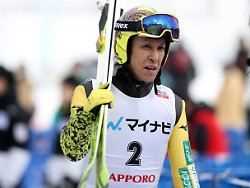Friday 19th November 2021
The ski jumping season begins
Pterosaurs, superstars and medal dreams
A pterosaur, the ski jumping Lewandowski, the eternal dream of a German winner on the tour, the Olympic Games in Beijing, the flying world championship. The ski jumping season only lasts 121 days, but it is packed with highlights. It starts this weekend. Here you can find out everything about it.
At the weekend in Nizhny Tagil, Russia, a season full of pick-packs for ski jumpers begins with the World Cup kick-off. Here you will find the answers to the most important questions about the “20 Hill Tour”.
What makes the season a “super winter”? Within 121 days until March 27th, there are no fewer than five major individual titles in ten countries: those in the overall World Cup, the Four Hills Tournament (December 29th to January 6th), the Aviation World Cup (March 10th to 13th ) as well as the two at the Olympic Winter Games in Beijing (February 4th to 20th).
How are the German jumpers positioned? Strong as seldom – at least in terms of breadth: For the first time in the recent past, all of the top staff at the DSV are fit. Stephan Leyhe, incredibly strong at the beginning of 2020, is also back in the team of head coach Stefan Horngacher after his cruciate ligament rupture. Together with the top stars Karl Geiger and Markus Eisenbichler, six other strong eagles are fighting for an initial six starting positions in the World Cup. Team world champion Severin Freund initially slipped out of the team. For a former victory jumper like Richard Freitag there was not even room in the preliminary round.
With so many choices: will a German finally win the tour? None of the top nations experienced such a long dry spell at the “Four Hills” as the co-host, who last triumphed with Sven Hannawald two decades ago. Since 2015/16 there have been six podium places – including four second places by five Germans (Freund, Wellinger, Eisenbichler, Leyhe, Geiger) – but not a redeeming triumph. Instead, Austria (7 times), Poland, Finland (4 each), Norway (2) and Japan, Slovenia and the Czech Republic (1 each) have won since Hannawald.
Who are the DSV-Adler’s strongest competitors? It looks like the usual suspects: The Norwegian Halvor Egner Granerud, last year superior overall World Cup winner despite Corona quarantine, dominated the Summer Grand Prix, which has always been a good oracle in recent years. Strong there: Granerud’s compatriot Marius Lindvik, the Japanese super flier Ryoyu Kobayashi, Austria’s world champion Stefan Kraft and Poland’s veteran Dawid Kubacki. His great compatriot Kamil Stoch is also to be reckoned with – but he is more interested in his fourth tour and Olympic victory.
Would you tell me more about tour winner Kamil Stoch? “King Kamil” is and will remain a phenomenon at the age of 34, his triumph on tour last winter was the best proof. The three-time Olympic champion, who is only surpassed in terms of popularity in his home country by world footballer Robert Lewandowski, has not yet had enough. “I want to get better every day,” says Stoch. After all, the Olympics are on again.
Where can the fans in Germany watch? If the worsening corona situation does not cause ghost jumping again as in the previous year, a full program awaits: Klingenthal (December 11th / 12th), the tournament jumping in Oberstdorf (December 29th) and Garmisch-Partenkirchen (January 1st), Willingen ( 29/30 January) and the flies in Oberstdorf (19/20 March).
What is different? A few familiar faces have disappeared: Sepp Gratzer, legendary material controller from Feistritz an der Gail, has retired after 30 years – the Carinthian has (not only) disqualified dozens of DSV eagles. His successor is the Finn Mika Jukkara. And the most successful World Cup jumper in history has put an end to: Gregor Schlierenzauer no longer wants to be in the second row after several years.
And what does Noriaki Kasai do? The Japanese pterosaur believes steadfastly in his ninth participation in the Olympics, even if the chances of the long-form poor senior are slim. “I’ll be 50 next year, but I have no intention of quitting,” says the 1992 ski flying world champion. What if it doesn’t work in 2022? “Then just four years later.” Or later. “I want to aim for 2030 when Sapporo applies to host.”
And the women? The season does not start until a week later, also in Nizhny Tagil, and the men meet more often in the World Cup – there are two mixed team competitions in Willingen and Lillehammer.
